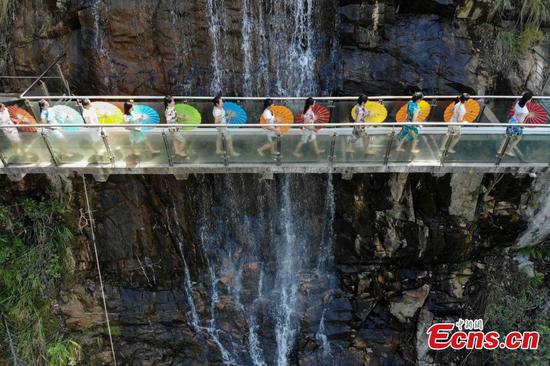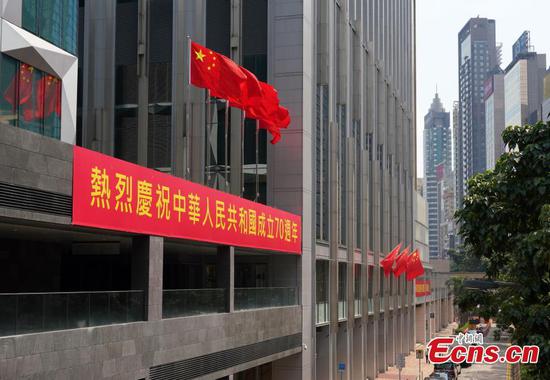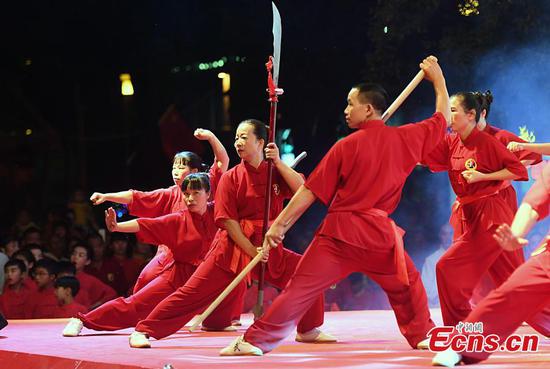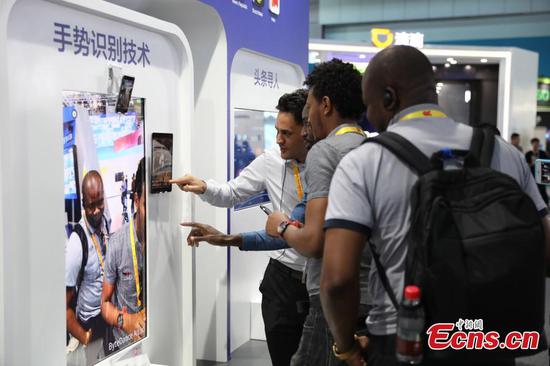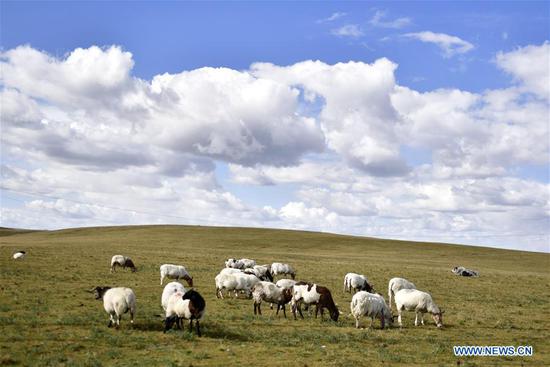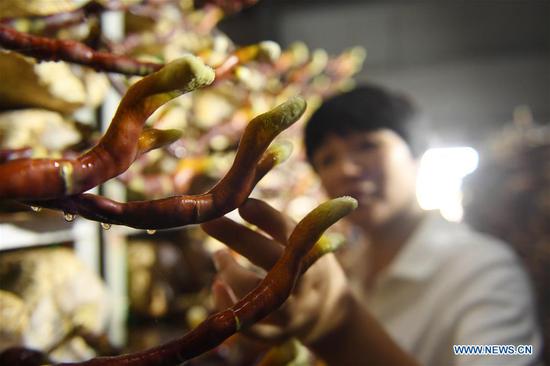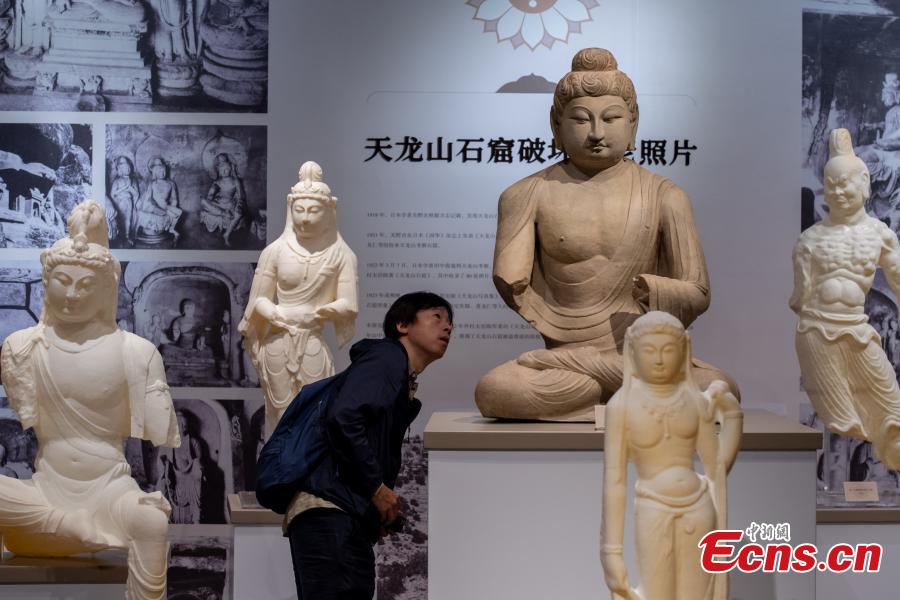
An exhibition of Buddhist statues originally built at the Tianlongshan Grottoes is held at the Taiyuan Museum in Taiyuan City, the capital of North China’s Shanxi Province, Sept. 26, 2019. The exhibition includes digital replicas of more than 100 sculptures, now housed in collections across nearly 30 museums in nine countries. Construction of the Tianlongshan Grottoes began during China's Northern Wei Dynasty (534-550). The site contains 25 caves and more than 500 statues built across a period spanning five Chinese dynasties. Throughout history, a number of the statues were removed and sold to collectors abroad. The digital technology allows separated parts housed in different museums, such as a head and body, to be virtually reunited to create a whole image once again. (Photo: China News Service/Wei Liang)
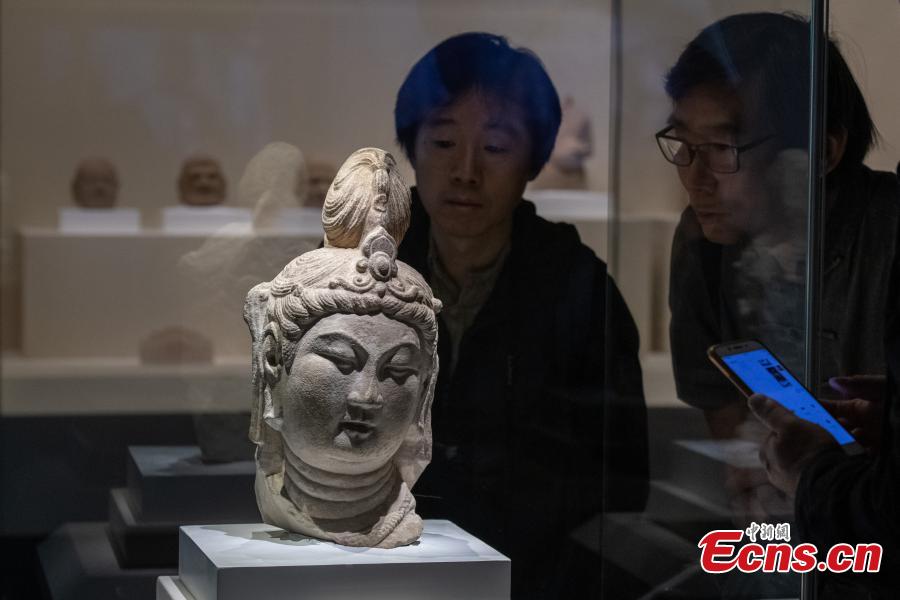
An exhibition of Buddhist statues originally built at the Tianlongshan Grottoes is held at the Taiyuan Museum in Taiyuan City, the capital of North China’s Shanxi Province, Sept. 26, 2019. The exhibition includes digital replicas of more than 100 sculptures, now housed in collections across nearly 30 museums in nine countries. Construction of the Tianlongshan Grottoes began during China's Northern Wei Dynasty (534-550). The site contains 25 caves and more than 500 statues built across a period spanning five Chinese dynasties. Throughout history, a number of the statues were removed and sold to collectors abroad. The digital technology allows separated parts housed in different museums, such as a head and body, to be virtually reunited to create a whole image once again. (Photo: China News Service/Wei Liang)
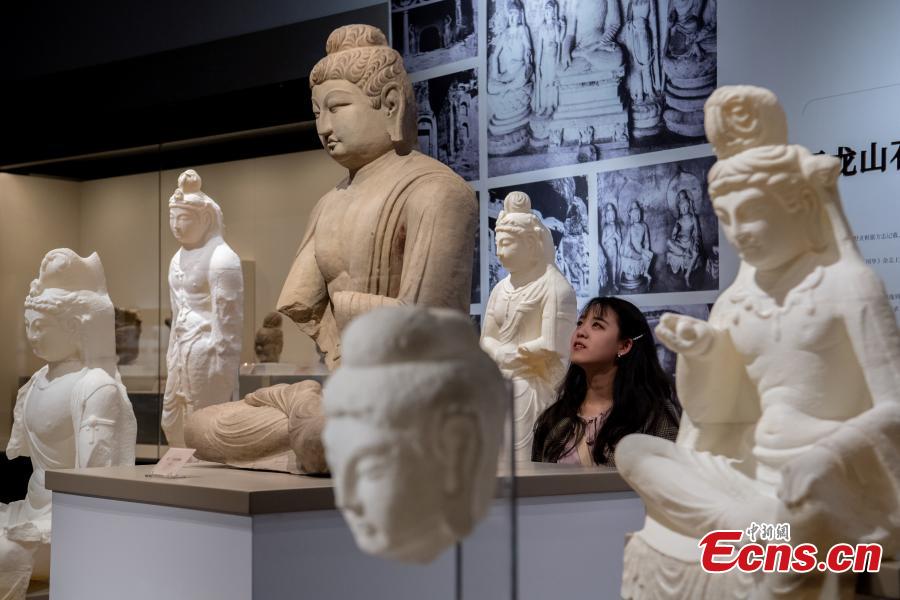
An exhibition of Buddhist statues originally built at the Tianlongshan Grottoes is held at the Taiyuan Museum in Taiyuan City, the capital of North China’s Shanxi Province, Sept. 26, 2019. The exhibition includes digital replicas of more than 100 sculptures, now housed in collections across nearly 30 museums in nine countries. Construction of the Tianlongshan Grottoes began during China's Northern Wei Dynasty (534-550). The site contains 25 caves and more than 500 statues built across a period spanning five Chinese dynasties. Throughout history, a number of the statues were removed and sold to collectors abroad. The digital technology allows separated parts housed in different museums, such as a head and body, to be virtually reunited to create a whole image once again. (Photo: China News Service/Wei Liang)
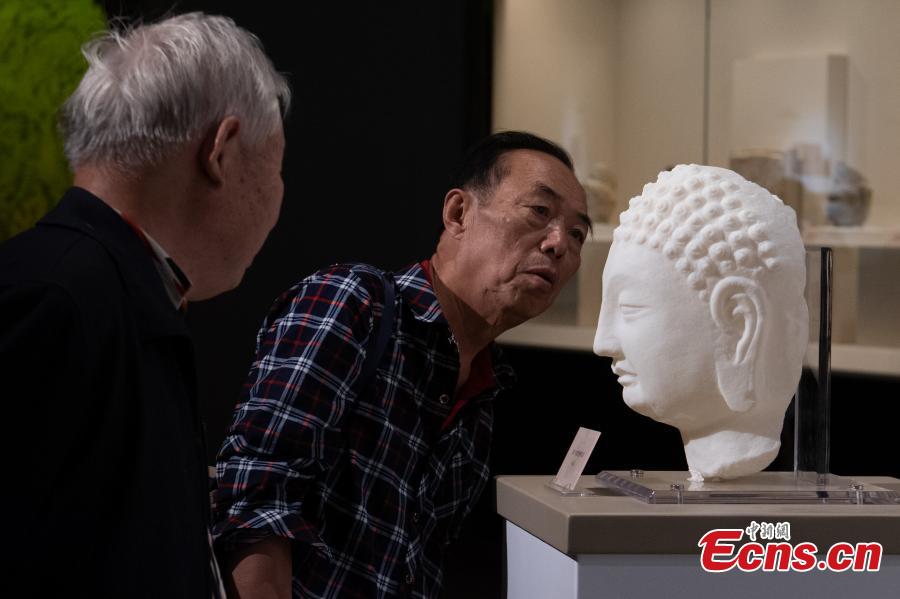
An exhibition of Buddhist statues originally built at the Tianlongshan Grottoes is held at the Taiyuan Museum in Taiyuan City, the capital of North China’s Shanxi Province, Sept. 26, 2019. The exhibition includes digital replicas of more than 100 sculptures, now housed in collections across nearly 30 museums in nine countries. Construction of the Tianlongshan Grottoes began during China's Northern Wei Dynasty (534-550). The site contains 25 caves and more than 500 statues built across a period spanning five Chinese dynasties. Throughout history, a number of the statues were removed and sold to collectors abroad. The digital technology allows separated parts housed in different museums, such as a head and body, to be virtually reunited to create a whole image once again. (Photo: China News Service/Wei Liang)
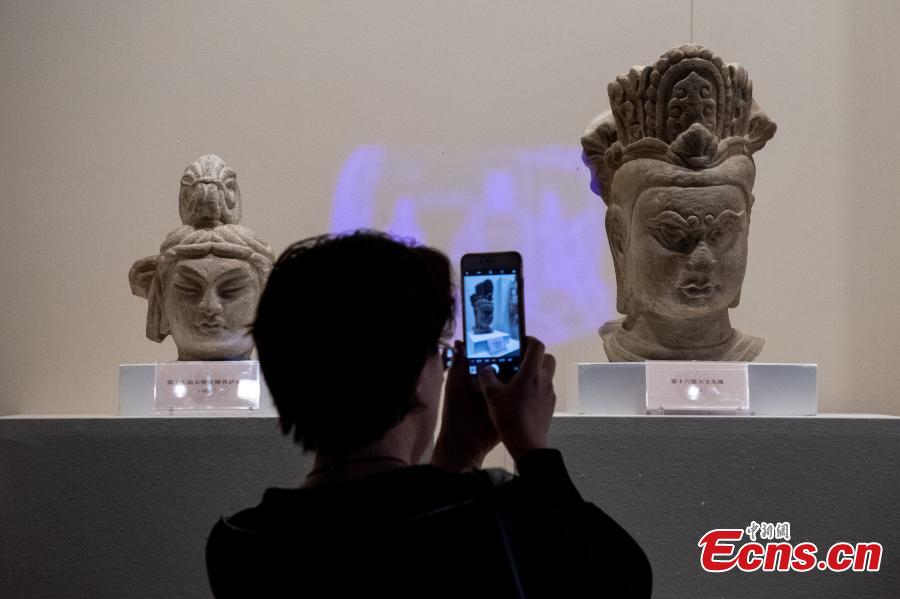
An exhibition of Buddhist statues originally built at the Tianlongshan Grottoes is held at the Taiyuan Museum in Taiyuan City, the capital of North China’s Shanxi Province, Sept. 26, 2019. The exhibition includes digital replicas of more than 100 sculptures, now housed in collections across nearly 30 museums in nine countries. Construction of the Tianlongshan Grottoes began during China's Northern Wei Dynasty (534-550). The site contains 25 caves and more than 500 statues built across a period spanning five Chinese dynasties. Throughout history, a number of the statues were removed and sold to collectors abroad. The digital technology allows separated parts housed in different museums, such as a head and body, to be virtually reunited to create a whole image once again. (Photo: China News Service/Wei Liang)

